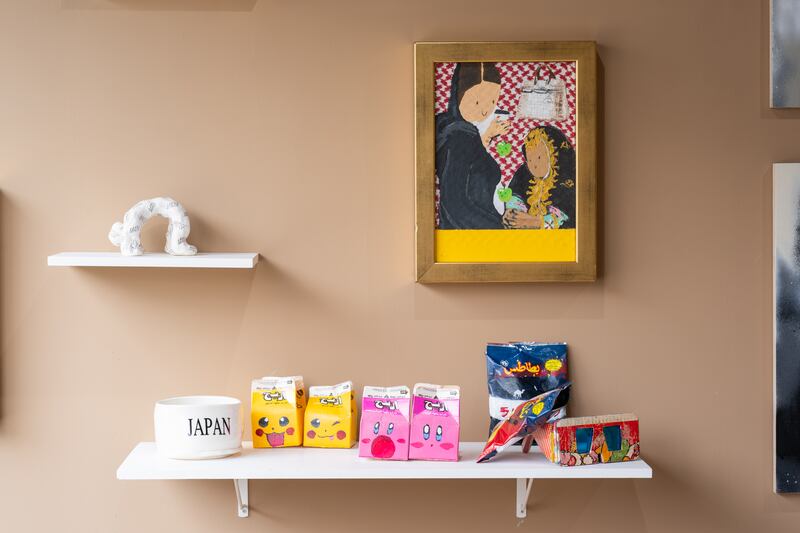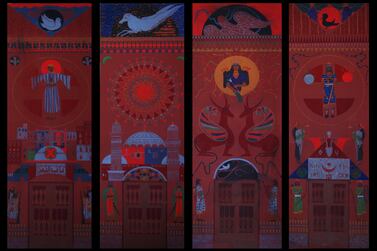“Why look Westwards when you can look East?”
It’s a question Sophie Arni asked herself many years ago.
A student of art history at the New York University Abu Dhabi in 2016, she observed how the local art community seemed to rely, as she describes it, on “western modes of thinking”.
“I always heard the tagline ‘East meets West’ when people talk about the UAE art scene, especially at the time,” she says.
Since then, Arni, a curator who is half-Swiss, half-Japanese, has been trying to redirect the focus towards East Asia and to form conceptual connections between the Arabian Gulf and Japan, where she currently lives.
This month, she opened East-East Vol. 4: The Curio Shop, a new exhibition in Tokyo that yokes the UAE and Japan through the works of contemporary artists. Moving across three different neighbourhoods in Tokyo throughout July, the show features 14 artists, eight from the Gulf, all of whom are premiering their work in the country, and six from Japan.
Among those in the show are UAE artists Almaha Jaralla, Arthur de Oliveira, Hashel Al Lamki and Khalid Mezaina, along with Japanese artists Daisak, Heijiro Yagi, Rintaro Fuse and Tomoki Kurokawa.
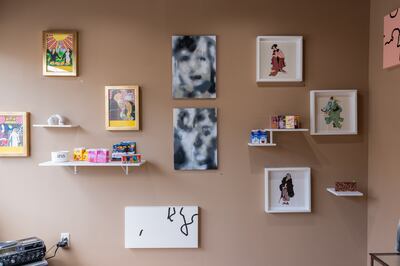
It is the latest in the exhibition series East-East: UAE Meets Japan that Arni developed in 2016 as a university student. At the time, she was completing her research on Chinese porcelain and its migration along the Silk Road towards Europe, but she also became interested in the trade routes across the Middle East and East Asia.
“The historical connections between the two regions are there, with the Silk Road and the trade that happened over centuries, but in the contemporary art scene, it’s always mediated by western institutions,” she says.
Arni wanted to bridge the two countries with her knowledge of emerging artists from both worlds. The first show commissioned works from four Emirati artists who turned to artistic techniques from Japan, including woodcut prints and the aesthetics of wabi-sabi.
East-East gained traction, with the initial show in Abu Dhabi restaged a month later at Chi-Ka, a clothing brand and temporary art space in Dubai. In 2017, it returned with East-East Vol. 3: 2020, comparing the concept of futurism in the Gulf and Japan.
Now, after a four-year hiatus, Arni debuts East-East in Japan with a curatorial theme inspired by Felice Beato’s 1868 photograph of a curio shop in Yokohama. Referring to bric-a-brac, “curios” – short for curiosity – were originally used for objects of interest from the Far East that were brought to Europe.
In the show, today’s curios crossing the Asian continent include manga and anime, an export from Japan that became popular in the Gulf in the 1990s to 2000s via shows dubbed in Arabic.
Aisha Al Ali’s works of milk cartons and juice boxes painted with faces of anime characters, including the robot cat Doraemon, suggest that the visual language of Gulf nostalgia is inevitably linked to this media.
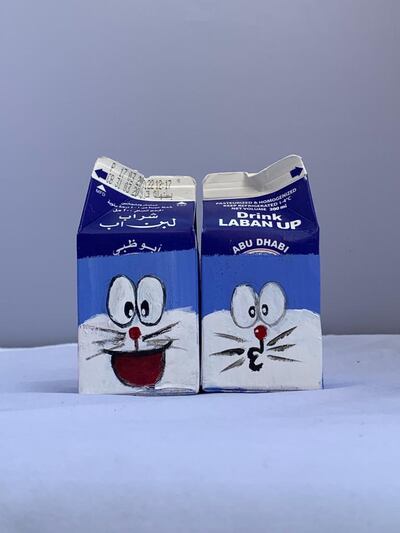
“Though the kawaii aesthetic is dated in Japan, it’s still relevant outside of it, like in the UAE. It’s interesting to see how familiar anime is to people who grew up in the UAE, who see it as a kind of escape from the neoliberal aesthetic of super commercialisation in the 2000s,” Arni explains.
Salman AlNajem, on the other hand, creates endearing characters rendered in flat-style, with uniform faces of dotted eyes and curved smiles. His illustration One Million Aspiration borrows from the ukiyo-e style of 17th-century Japan that idealistically captured the scenes from the world.
AlNajem’s version focuses on a mother and daughter in traditional Emirati attire, but with interjections of consumerist life – a cup of coffee in the mother’s hand and a Hermes Birkin bag to the side.
But what about the UAE’s exports to Japan? Arni brings in Christopher Benton’s video work Dubai Jumeirah Gardens Villas & Estates Valley Hills to address the global image of Dubai and the UAE and its narrative of hyper-modernity.
The work stitches promo videos for doomed real estate projects throughout Dubai. Because they were never built, Benton states, they exist “in the liminal sphere of a utopian vision that never came”.
Arni explains that “the work deals with most of Japanese people’s impressions of the Gulf, buildings, money, oil, as an entry point,” proposing that the usual ideas of urbanism, gentrification and growth operate differently in the region.
Though influences from Japan are present in the works of some Gulf artists, artistic connections in the other direction are still thin.
“I think Japan has influenced youth culture [in the Gulf] more than the other way around,” Arni says.
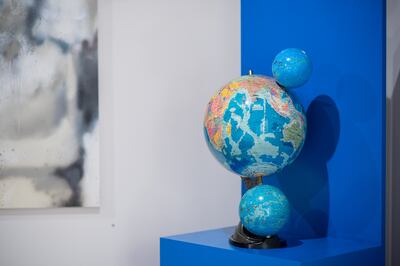
“When it comes to the art scene, I think I am breaking new ground by introducing these young Gulf artists here. Many of the people who have come to see the show have said it’s the first they’ve seen artists from the region through an exhibition format,” the curator adds.
Beyond that, Arni is also attempting to mediate discourse between several artistic communities, tethering artists together not only by their inspiration or style, but also concepts and ideas.
“It’s been four years since the last [East-East], so this is a culmination of the conversation I have been having with artists here. I hope this exhibition can be a starting point for many artists to create more than that exchange.”
East-East Vol 4.: The Curio Shop is on view until Saturday, July 24. More information here.
